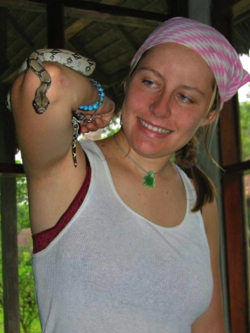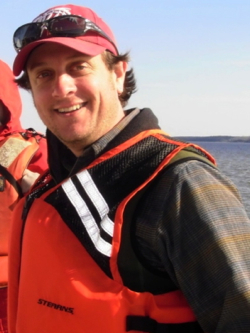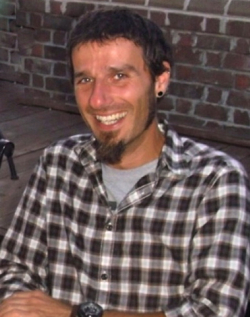John E. Olney Sr. Ichthyology Award
The John E. Olney Sr. Ichthyology Award honors the distinguished career of the late Professor John Olney, and his unwavering dedication to fostering young marine scientists and ichthyologists. The intent of this award is to celebrate John’s life and accomplishments and inspire future scientists by supporting their pursuit of knowledge and professional growth. This award provides funds to deserving graduate students for participation in educational and professional-development activities, including attendance at meetings, workshops, and special research opportunities in ichthyology.

The recipients of this award in its second year are Katie May Laumann, Casey Dillman, and Peter Konstantinidis.
Katie May joined the VIMS community as a graduate student in 2010, and has outlined a Ph.D. project on the anatomy, systematics, and biogeography of sturgeons. Katie May’s dissertation will advance our understanding of these iconic fishes by integrating developmental morphology, evolutionary biology, and biogeography to address their conservation.

Congratulations, Katie May.
The second winning application for the Olney Award was co-authored by Drs. Casey Dillman and Peter Konstantinidis, both post-doctoral researchers in the Department of Fisheries Science at VIMS. Casey began his post-doc research at VIMS in 2010, studying the development, systematics, and evolution of sturgeons. Peter currently splits his time between VIMS and Friedrich Schiller University in Jena, Germany where he has a 3-year fellowship from the Volkswagen Foundation. He is researching the development of the skeleton and muscles of the jaws in primitive ray-finned fishes.

Casey and Peter are collaborating on a study of the development of the skeleton, cranial nerves, and blood vessels of the head in primitive ray-finned fishes, which extends significantly the research that each are conducting as part of their own post-doctoral research. In collaboration with colleagues at Cornell University, Casey and Peter will be using state-of-the-art microCT scanning technology to “push the boundaries” of comparative developmental morphology.
Congratulations, Casey and Peter.
